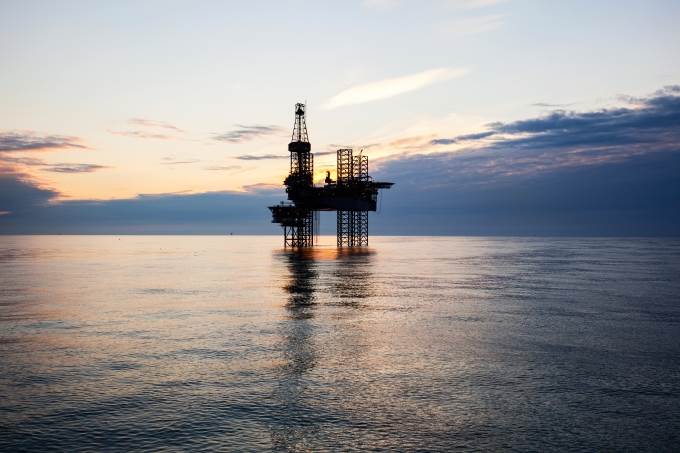
By Giles Coghlan, Chief Currency Analyst at HYCM
Oil has certainly taken a beating of late; the US-China trade war, global economic slowdown, climate change activism, etc. All these and more have been weighing on the commodity we tend to view as a proxy for economic activity. Oil’s price is reflexive in this sense; it doesn’t just mirror conditions in the global economy, it helps create them. Down over 20% since last year’s highs and some 60% from its all-time highs in 2008, are oil’s best days behind it, or is it time to start thinking about black gold as a potential opportunity again? Below you’ll find three solid reasons for why it may be a good time to start getting bullish about oil.
1. OPEC is Cutting
Last week, members of the Organisation of Petroleum Exporting Countries met in Vienna to coordinate one of the most pronounced production cuts in over a decade. The meeting included various strategic partners including Russia, Mexico, Oman and several other non-OPEC players that—along with OPEC members—have come to be known collectively as OPEC+. The agreement, spearheaded by Saudi Arabia’s energy minister Prince Abdulaziz bin Salman, will see OPEC removing a further 500,000 barrels of oil per day from the global supply, taking its target to 1.7 million barrels per day until March of 2020.
OPEC members will be responsible for around three-quarters of this production cut, meanwhile, the peripheral “+” nations will shoulder the remaining 130,000-barrel cut. Saudi Arabia will continue to cut a further 400,000 barrels over and above its own quota. Prince Abdulaziz voiced his “deep belief” that the collaboration between OPEC+ nations would continue, an indication that he is confident in achieving widespread compliance with these cuts.
Market reaction has been tentative since the agreement was announced, crude did break out of its recent range to trade at 12-week highs, but the price remains well below April’s peak. These cuts are designed to offset the growing supply coming from other non-OPEC sources such as US Shale Oil, Canadian Oil Sands, and Brazilian Subsalt.
Goldman Sachs subsequently lifted its 2020 oil price forecasts slightly to $63 per barrel for Brent and $58.5 for WTI. By continuing to reduce supply in this way, OPEC is playing a delicate game of balancing out the profitability of its own members while waiting for the US Shale Revolution to overexert itself.
2. Shale is Slowing
Probably the most controversial topic in the energy markets, shale oil has been derided as being wasteful, ecologically hazardous and only viable at high oil prices. It has also been labelled a debt-funded Ponzi that would have been impossible without the cheap money US oil producers had on tap in the wake of the 2008 crisis.
Nevertheless, over the past decade or so, US shale companies have managed to increase their efficiency and allowed the US to wean itself off its reliance on Middle Eastern oil. Astonishingly, in 2018 the US became the world’s largest oil producer thanks to shale. Equally astonishingly, in September of this year, it also became a net exporter of oil for the first time since 1973, when monthly records started being kept.
Despite all this, the clock appears to be ticking on US shale. Recently IHS Markit forecasted a “major slowdown” in US oil production. It expects growth of 440,000 barrels per day in 2020, after which US oil production is expected to flatten out.
Raoul LeBlanc, vice president for North American unconventionals at IHS Markit outlined the severity of the expected slowdown:
“Going from nearly 2 million barrels per day annual growth in 2018, an all-time global record, to essentially no growth by 2021 makes it pretty clear that this is a new era of moderation for shale producers… this is a dramatic shift after several years where annual growth of more than one million barrels per day was the norm.”
Shale’s woes don’t end there. Markets have been punishing US oil stocks for not being profitable. The sector has significantly underperformed in the S&P 500 this year and is trading at levels last seen in 2009. A knock-on effect of this is the difficulty these companies are experiencing in raising the capital required for exploration. Add to this the effects of share buybacks and higher dividend payments demanded by shareholders and you can see why new projects are on the decline. This will only exacerbate the slowdown of production further down the line as current projects reach their peak capacity.
3. The Trade War Has Been Priced In
Like Brexit in the UK, the US-China trade war has been used as an explanation and excuse for the market’s every whim and since President Trump inaugurated it in 2018. That’s when the US began imposing tariffs and trade restrictions on Chinese products due to “unfair trade practices” such as intellectual property theft.
What started as a spat between two trading partners has come to affect economies far and wide as it has dragged on. Germany, an innocent bystander with otherwise good relations with China has been hit particularly hard by the trade war, as have countries like Canada and Australia who depend on Chinese markets for their commodity exports.
However, a lot of the pain of the trade war has already been felt, particularly in commodities like oil that are extremely sensitive to demand expectations. When you consider the recent Abqaiq–Khurais drone strikes, which halved Saudi output (5% of global supply) but barely registered on the oil charts, you start to wonder whether, at least as far as sentiment goes, we’re getting close to bottoming out.
US oil and gas stocks are another area where things are looking like they may be getting close to bottoming. The same stocks that used to trade at 8-10 times EBITDA a few years ago now trade at around 4-8 times EBITDA and at the same price levels they were trading at just after the 2008 crisis.
The point is that there may be a higher probability of a shock to the upside now, rather than a shock to the downside. The trade war won’t carry on indefinitely and it takes time to get new sources online and have them ramp up production. The sheer negativity of the market towards anything oil-related is reason enough to start looking in the opposite direction, especially if we start seeing inventories surprising the markets by shrinking.
Final Thoughts
Almost a decade after it was feared that we had reached “peak oil”, our reliance on black gold has led us to find more ingenious ways of pulling it out of the ground in greater quantities. While most of us have largely accepted that the future will involve us relying on alternative sources of energy, this significant regime change is not yet upon us. Could crude oil experience one last manic run before it starts to be replaced as the dominant energy source? The factors discussed above seem to suggest this as a distinct possibility. What’s more, a global transition as sweeping as the one required to switch to greener energies is much more likely to occur in a world of high oil prices rather than low oil prices, which is definitely food for thought.
High Risk Investment Warning: Contracts for Difference (‘CFDs’) are complex financial products that are traded on margin. Trading CFDs carries a high degree of risk. It is possible to lose all your capital. These products may not be suitable for everyone and you should ensure that you understand the risks involved. Seek independent expert advice if necessary and speculate only with funds that you can afford to lose. Please think carefully whether such trading suits you, taking into consideration all the relevant circumstances as well as your personal resources. We do not recommend clients posting their entire account balance to meet margin requirements. Clients can minimise their level of exposure by requesting a change in leverage limit. For more information please refer to HYCM’s Risk Disclosure.
